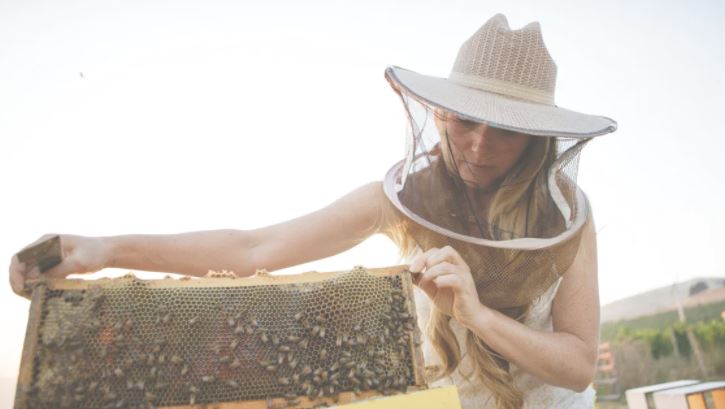
As demand for solar energy continues to grow, the co-location of solar and agriculture—also known as agrivoltaics—offers opportunities for conservation, food production, increasing pollinator habitat, and adding farm revenue streams while producing affordable renewable energy.
A new resource from the Center for Rural Affairs explores the benefits of one such method of agrivoltaics—solar beekeeping.
“Placing beehives on or near solar sites can enhance the value of the land by keeping it in agricultural production and providing new streams of income for local farmers,” said Lindsay Mouw, a Center policy associate. “Solar beekeeping also has environmental benefits, such as providing pollinator services to local crops. When solar panel fields are planted with native and non-invasive vegetation, the land serves as critical habitat for bees, monarch butterflies, and other insects, birds, and animals.”
In addition to exploring the benefits, “Making the Case for Solar Beekeeping” includes recommendations for developers, landowners, and policymakers to consider during the planning process.
“Policymakers can develop zoning regulations that require, incentivize, or otherwise encourage utility- and community-scale solar projects to be seeded with native and non-invasive vegetative ground cover,” Mouw said. “These regulations can set up a project site for beekeeping, even if it is not included as a goal during original project planning. It is important that regulations not be so strict they reduce opportunities for other beneficial practices, such as grazing.”
To learn more about solar beekeeping, view and download our “Making the Case for Solar beekeeping” fact sheet at cfra.org/publications.


















